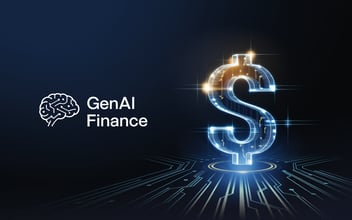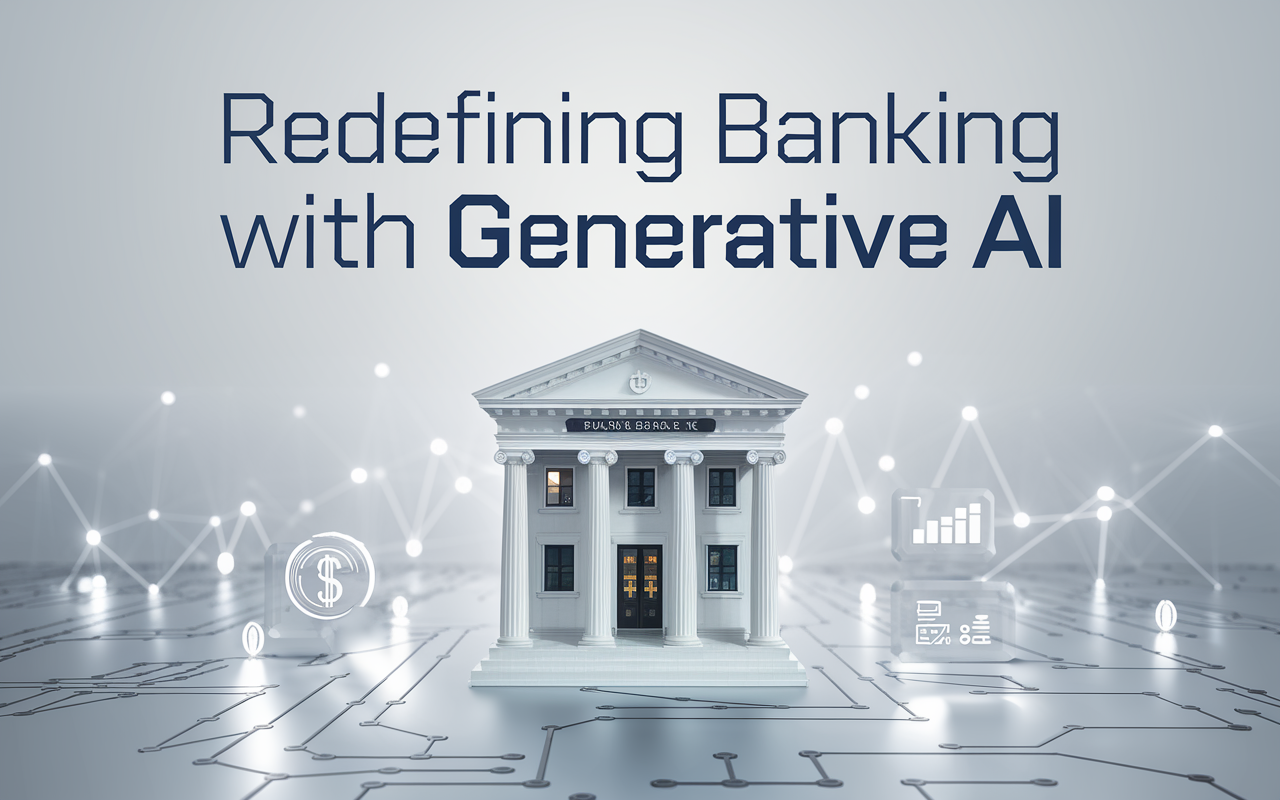
Introduction
Generative AI is redefining the financial sector, particularly in banking, by enabling innovative solutions and improving efficiency. Its capacity to enhance decision-making, optimize resource allocation, and deliver tailored services makes it indispensable for the modern banking landscape. This article delves into two impactful applications of generative AI in banking: revolutionizing wealth management and strengthening anti-money laundering (AML) efforts.Wealth Management Optimization
Generative AI brings precision, personalization, and efficiency to wealth management, empowering financial advisors to offer client-centric services.
- Portfolio Simulation at Scale: Traditional portfolio management relies on historical data and static models, which may not adapt to dynamic market conditions. Generative AI overcomes this limitation by simulating thousands of scenarios, taking into account market volatility, geopolitical events, and economic trends. These simulations enable financial advisors to recommend investment strategies that align with the client's risk appetite and long-term goals.
- Personalized Financial Planning: AI systems can analyze individual client data, such as spending habits, income streams, and financial aspirations, to design bespoke financial plans. This level of personalization fosters client trust and strengthens advisory relationships.
- Real-time Market Monitoring: The financial markets are ever-changing, and generative AI tools are capable of monitoring these shifts in real time. This ensures that advisors can adapt strategies promptly, helping clients seize new opportunities or mitigate potential risks.
- Democratization of Wealth Management: Traditionally, personalized wealth management has been a service reserved for high-net-worth individuals. Generative AI democratizes this by offering cost-effective solutions that allow banks to extend personalized services to a broader client base, including middle-income groups.
- Proactive Customer Retention: Generative AI enables financial institutions to anticipate client concerns, such as underperforming investments or changing financial needs. This foresight allows advisors to address issues proactively, fostering loyalty and long-term partnerships.
By transforming wealth management with generative AI, banks can offer services that are not only highly personalized but also more inclusive, ultimately driving better outcomes for clients and the institution.
Strengthening AML Efforts
Anti-money laundering compliance is critical in protecting financial systems and maintaining regulatory integrity. Generative AI enhances AML operations by automating and refining fraud detection processes.
- Complex Pattern Recognition: Traditional AML systems struggle with detecting sophisticated laundering schemes hidden in vast transaction datasets. Generative AI, with its ability to analyze multidimensional data, identifies patterns and connections that signal suspicious activities, such as layering or structuring, which might elude conventional detection systems.
- Dynamic Risk Profiling: Unlike static models, generative AI updates risk profiles in real time based on new data. For example, it can adjust a customer's risk score if unusual behavior, such as transactions in high-risk regions, is detected, ensuring immediate and accurate risk assessments.
- Operational Efficiency Gains: Banks allocate significant resources to AML compliance, yet false positives in traditional systems often overwhelm compliance teams. Generative AI reduces this burden by minimizing false positives and prioritizing high-risk cases, allowing for a more focused and efficient allocation of resources.
- Enhanced Regulatory Reporting: The integration of AI can streamline the generation of regulatory reports, ensuring accuracy and compliance. Banks can provide regulators with detailed insights into suspicious activity investigations, showcasing transparency and proactive management.
- Global Coordination Against Financial Crime: Generative AI facilitates cross-border collaboration by enabling seamless data integration and analysis across international banking networks. This capability strengthens global efforts to combat money laundering, ensuring no entity operates in isolation.
By adopting generative AI for AML purposes, banks can reduce financial crime exposure, safeguard their reputation, and build trust among clients and regulators.
Conclusion
Generative AI is revolutionizing banking through its applications in wealth management and AML efforts. By enabling precision, personalization, and proactive measures, banks can better serve their clients while ensuring regulatory compliance. As generative AI continues to evolve, its potential to reshape the financial industry will only grow, driving efficiency and innovation across operations.
Facilitating AI Integration with Pacific Data Integrators (PDI)
Integrating Generative AI and Large Language Models (LLMs) into banking and finance can seem daunting, but with Pacific Data Integrators (PDI), it becomes a streamlined and supported journey. Partnering with PDI ensures a seamless transition and enduring success, turning challenges into opportunities. Discover how PDI's tailored solutions can transform your business by consulting with our experts today.
You can book a consultation today by visiting us at PDI.

Posted by PDI Marketing Team
Pacific Data Integrators Offers Unique Data Solutions Leveraging AI/ML, Large Language Models (Open AI: GPT-4, Meta: Llama2, Databricks: Dolly), Cloud, Data Management and Analytics Technologies, Helping Leading Organizations Solve Their Critical Business Challenges, Drive Data Driven Insights, Improve Decision-Making, and Achieve Business Objectives.




